The Miss USA circuit just saw two groundbreaking wins. Bailey Anne Kennedy, a transgender woman, clinched Miss Maryland, while Sarah Milliken, a plus-size contestant, took Miss Alabama Pageant Winner.
These victories challenge pageant norms, sparking talks on inclusivity and representation. Let’s dive into their stories and what they mean for beauty contests.
Miss Maryland’s Transgender Triumph
Bailey Anne Kennedy made history as the first openly transgender woman to win Miss Maryland. Her victory marks a significant milestone in pageant inclusivity.
Kennedy’s journey wasn’t easy. She faced:
- Skepticism from traditionalists
- Online backlash
- Complex pageant rules
Yet, she persevered, showcasing talent, intelligence, and grace throughout the competition.
“I’m here to show that beauty comes in all forms,” Kennedy stated post-win. “Transgender women are women, and we deserve a place on this stage too.”
Her win sparked support from LGBTQ+ advocates and allies. It’s seen as a step forward in recognizing diverse womanhood.
You might also like All About Blackout 2024
Transgender Representation in Pageants: A Timeline
Kennedy’s victory is part of a growing trend:
| Year | Milestone |
| 2018 | Angela Ponce becomes first transgender Miss Universe contestant |
| 2019 | Kataluna Enriquez wins Miss Nevada USA |
| 2021 | Kylan Wenzel competes in Miss California USA |
| 2023 | Bailey Anne Kennedy wins Miss Maryland |
These milestones paved the way for Kennedy’s success, highlighting evolving beauty standards in pageantry.
Plus-Size Powerhouse Takes Miss Alabama Crown
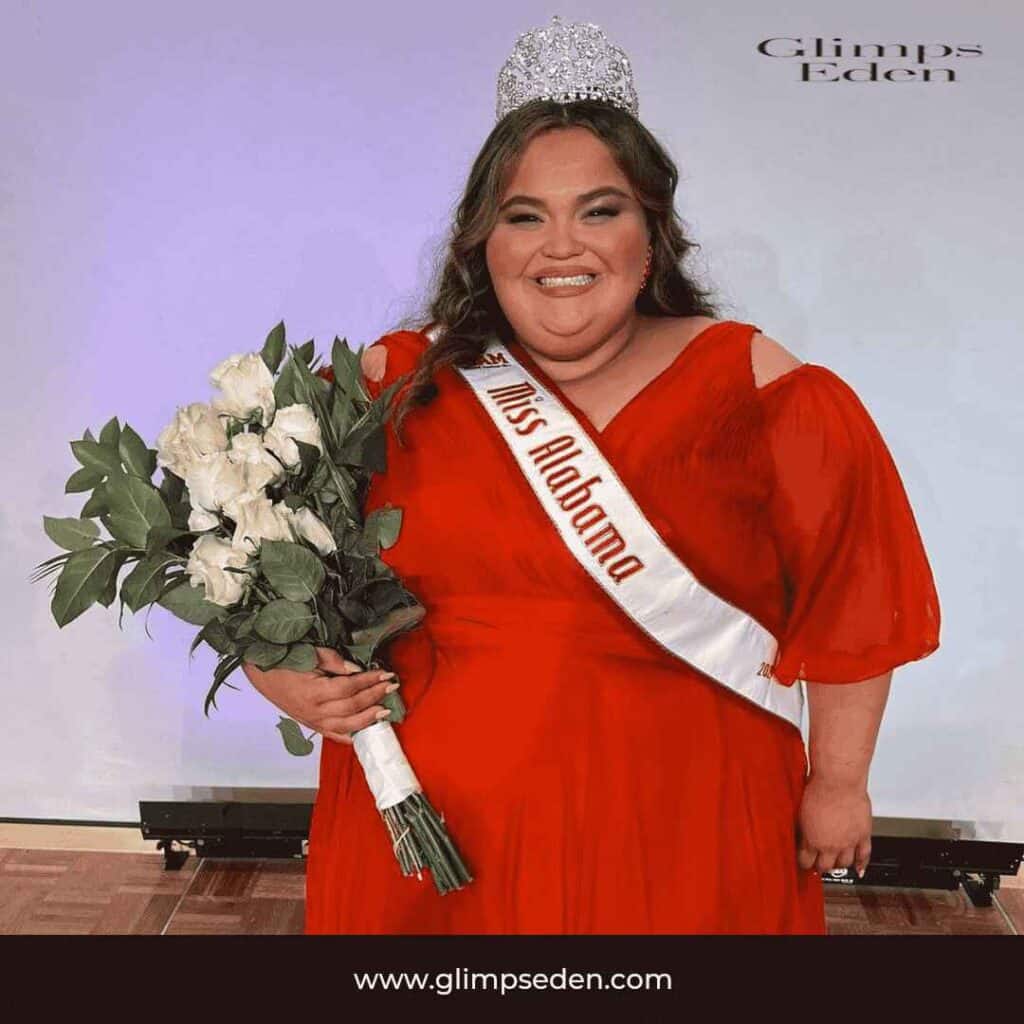
Sarah Milliken made waves as the first plus-size contestant to win the title of Miss Alabama Pageant winner. Her victory challenges long-held notions about body types in pageants.
Milliken’s platform focuses on body positivity and self-acceptance. She aims to:
- Promote healthier body image among young women
- Advocate for size inclusivity in fashion and media
- Encourage self-love regardless of shape or size
“Beauty isn’t one-size-fits-all,” Milliken emphasized. “It’s time our pageants reflected the diversity of real women.”
Her win resonates with many who’ve felt excluded from traditional beauty standards.
You might also like Avengers: Doomsday – Release Date
Evolution of Plus-Size Representation
Milliken’s victory is part of a broader shift:
- 2016: Erin O’Flaherty becomes first plus-size Miss America contestant
- 2018: Miss World introduces a “plus-size” category
- 2020: Lindsey Coffey becomes first plus-size Miss Earth USA
- 2023: Sarah Milliken wins Miss Alabama
These developments reflect changing attitudes towards body diversity in pageants.
Shifting Paradigms in the Pageant World
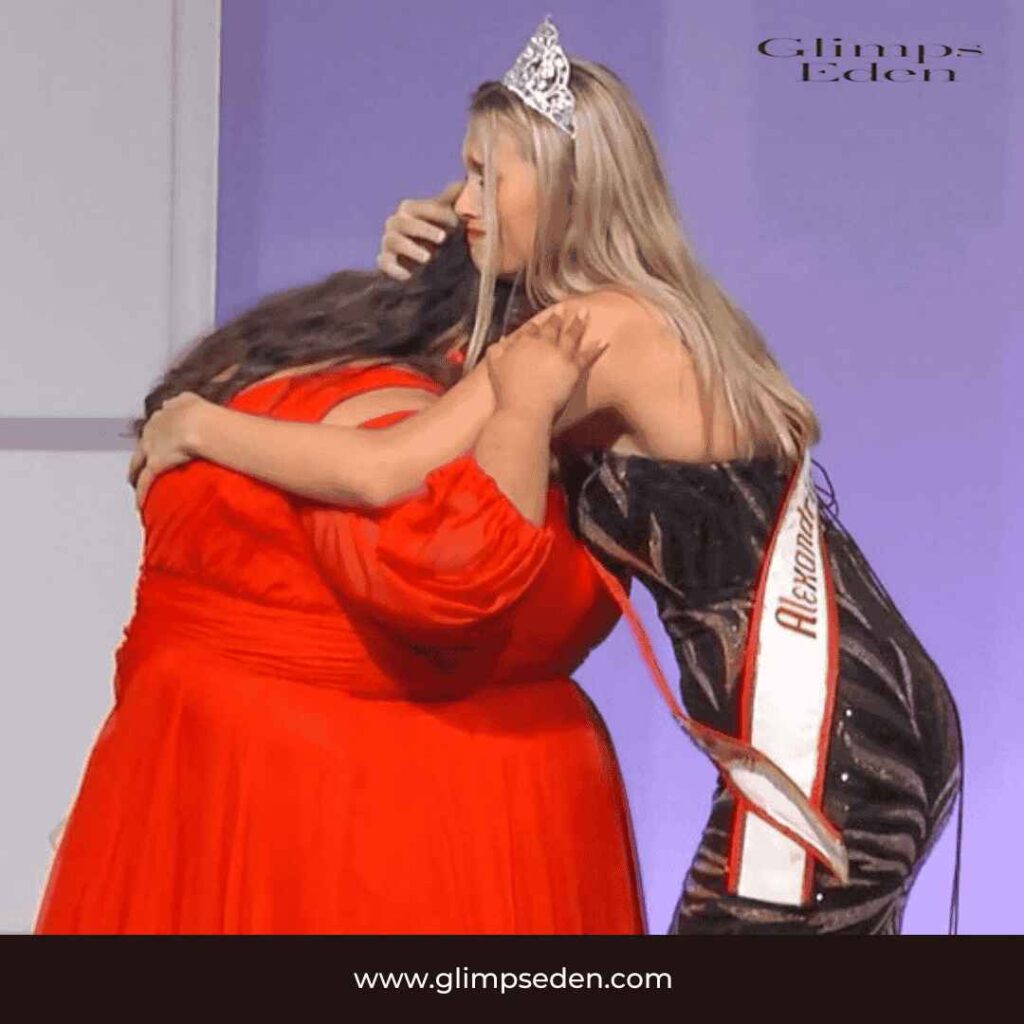
Kennedy and Milliken’s wins aren’t isolated incidents. They’re part of a larger trend towards inclusivity in beauty pageants.
Key Milestones in Pageant Evolution:
- 2012: Miss Universe allows transgender contestants
- 2018: Miss America eliminates swimsuit competition
- 2019: Zozibini Tunzi wins Miss Universe, celebrating natural hair
- 2021: Miss USA welcomes first openly lesbian contestant
- 2023: Kennedy and Milliken’s historic wins
These changes show that beauty pageants are recognizing diverse forms of beauty.
You might also like Cast of ‘Bob Marley: One Love’ – A Quick Guide
Resistance and Controversy
Despite progress, these changes face criticism. Some argue that:
- Transgender inclusion undermines women’s pageants
- Plus-size representation promotes unhealthy lifestyles
Supporters counter:
- Inclusivity enriches the pageant experience
- Diverse representation inspires a broader range of women
The debate continues, but the trend towards inclusivity seems set to grow.
Beyond the Crown: Societal Implications
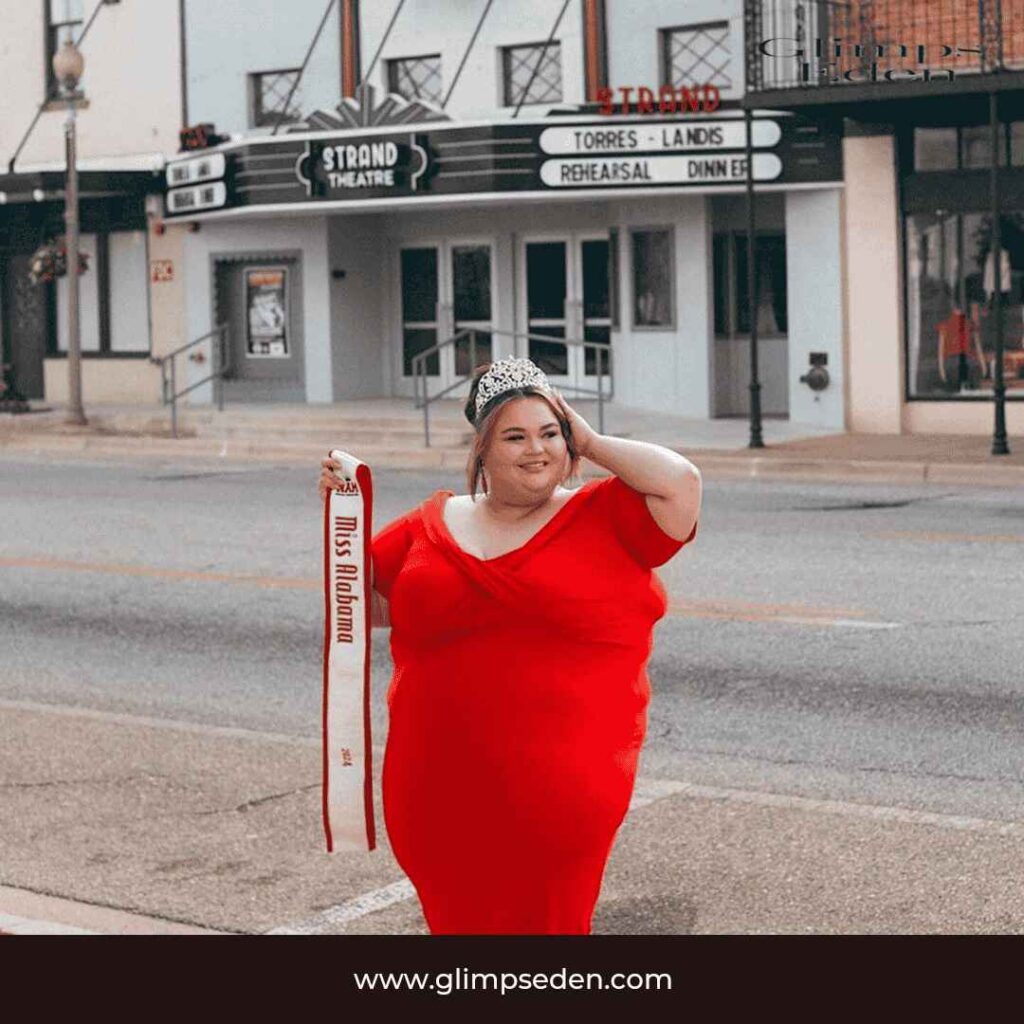
Kennedy and Milliken’s wins impact more than just pageants. They have broader societal implications:
- Representation Matters: Diverse winners boost self-esteem among marginalized groups.
- Challenging Norms: These wins force society to reconsider beauty standards.
- Inspiring Future Generations: Young people now have more diverse role models.
- Media Discourse: These stories spark important conversations about inclusivity.
You might also like Meet the Cast of Thanksgiving
Case Study: Impact on Young Viewers
A University of Michigan study found that diverse pageant contestants positively affect young viewers’ self-image:
- 68% reported improved body confidence
- 72% felt more accepting of different gender identities
- 85% believed pageants should continue to diversify
These findings underscore pageants’ potential to shape societal attitudes positively.
The Road Ahead
While Kennedy and Milliken’s wins are significant, there’s more work to do in making pageants truly inclusive. Future steps might include:
- Expanding size ranges in pageant clothing
- Increasing representation of different ethnicities and abilities
- Addressing ageism in pageantry
Expert Predictions:
Industry insiders foresee more diverse winners, potentially including:
- Contestants with visible disabilities
- More openly LGBTQ+ participants
- A wider range of body types and ages
Voices from the Pageant Community
Reactions to these groundbreaking wins have been mixed:
- Fellow Contestants: Many express support and excitement for change.
- Pageant Organizers: Some actively promote inclusivity; others are hesitant.
- Sponsors: Several major brands voice support for diverse representation.
“These wins show that pageantry can evolve and remain relevant in the 21st century,” says Maria Rodriguez, a pageant coach with 20 years of experience.
You might also like Is Average Joe a True Story?
Impact on Miss USA and Miss Universe
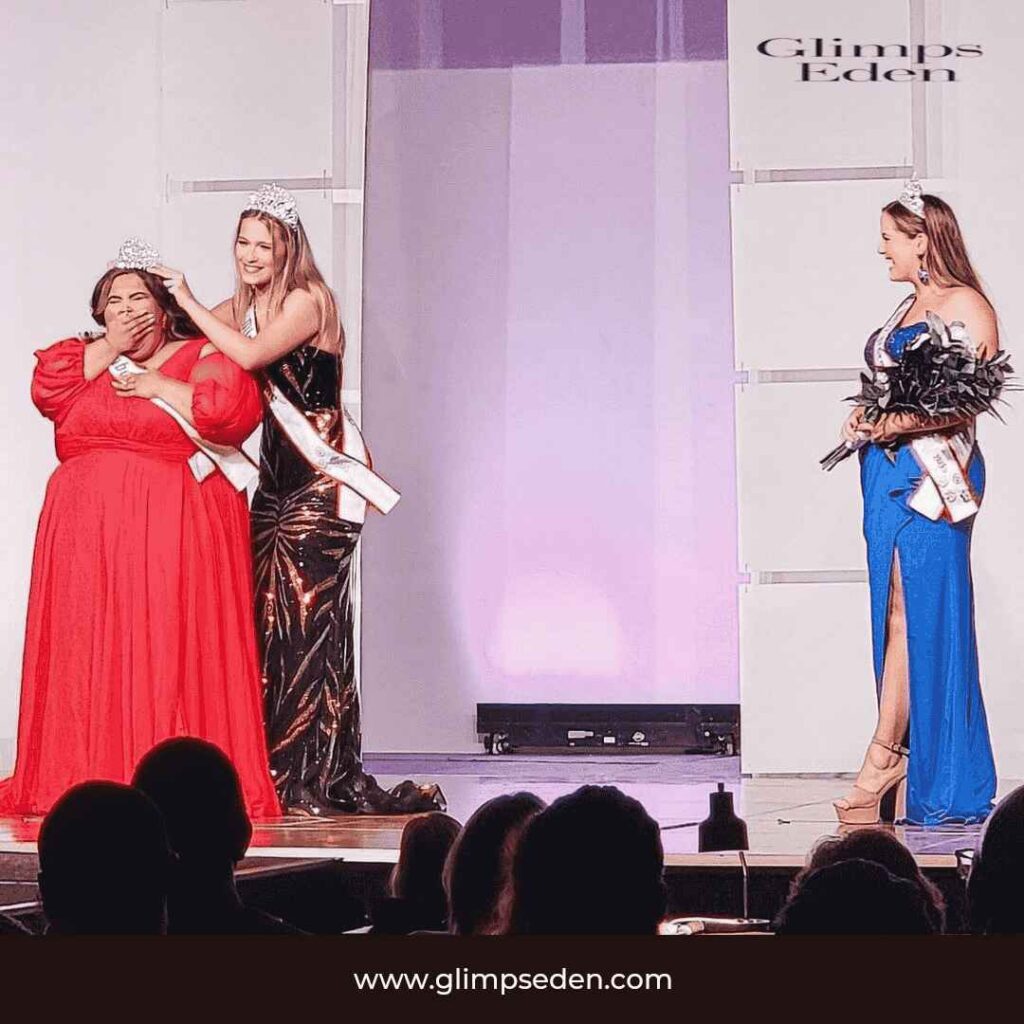
Kennedy and Milliken’s wins could influence larger pageants like Miss USA and Miss Universe. Here’s how:
- Changing Selection Criteria: Pageants might revise judging standards to be more inclusive.
- Diverse Judging Panels: More diverse judges could lead to more diverse winners.
- New Categories: Pageants might introduce new categories celebrating different types of beauty.
- Media Coverage: Increased attention on diversity could pressure bigger pageants to follow suit.
Body Positivity and Pageantry
Milliken’s win as the Miss Alabama Pageant winner highlights the growing body positivity movement in pageants. This shift is seen in:
- Elimination of strict weight requirements
- Inclusion of plus-size categories
- Focus on overall health rather than specific body types
Benefits of Body Diversity in Pageants:
- Promotes healthier body image among viewers
- Represents a wider range of women
- Challenges unrealistic beauty standards
Transgender Rights and Beauty Contests
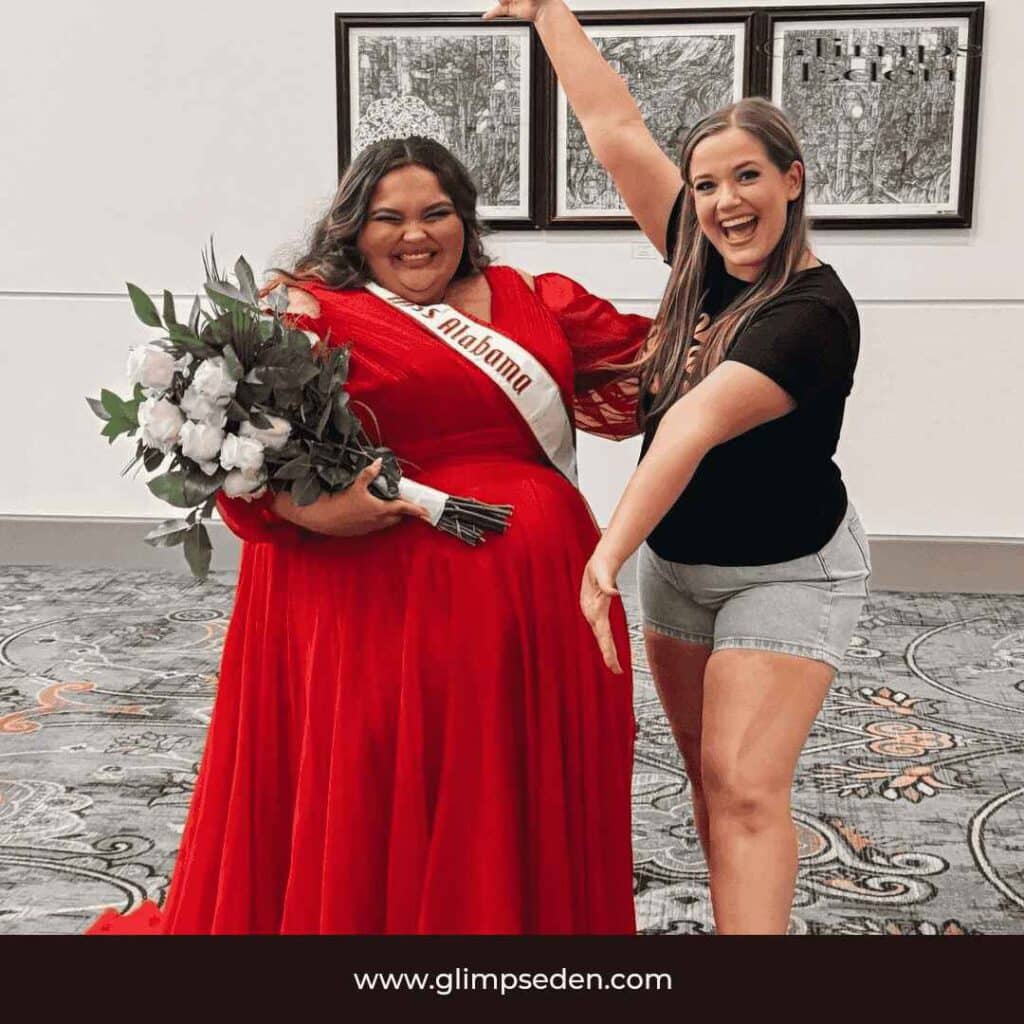
Kennedy’s Miss Maryland victory brings transgender rights to the forefront of pageant discussions. Key points include:
- Debate over fairness in competition
- Legal considerations for transgender participation
- Educational opportunities for pageant audiences
Challenges Faced by Transgender Contestants:
- Discrimination and prejudice
- Navigating complex rulebooks
- Dealing with public scrutiny
The Role of Social Media
Social media plays a crucial role in shaping public opinion about these wins:
- Hashtags like #TransIsBeautiful and #BodyPositivity trend
- Contestants use platforms to share their stories
- Online debates spark wider conversations about inclusivity
Social Media Impact:
- Increases visibility for diverse contestants
- Allows direct interaction between contestants and fans
- Puts pressure on pageants to embrace change
Economic Impact of Inclusive Pageants
Inclusivity in pageants isn’t just socially beneficial; it can be economically advantageous:
- Broader appeal attracts more diverse sponsors
- Increased viewership from underrepresented groups
- New markets for pageant-related products and services
Potential Economic Benefits:
- Higher ticket sales for inclusive events
- Increased merchandise revenue
- More diverse sponsorship opportunities
Conclusion
The victories of Bailey Anne Kennedy and Sarah Milliken in the Miss USA circuit represent a significant shift in beauty pageants. As transgender and plus-size winners, they’re challenging long-held beauty notions and paving the way for greater inclusivity.
While there’s still progress to be made, these wins mark an important step forward. They remind us that beauty comes in all shapes, sizes, and identities. As pageants evolve, they have the potential to become powerful platforms for celebrating diversity and empowering women of all backgrounds.
The question now is: How will the pageant world build on the momentum created by the Miss Alabama Pageant winner to create even more inclusive and representative competitions in the future?
FAQs
How do transgender contestants qualify for women’s pageants? A: Rules vary, but many allow transgender women who’ve completed transition and have legal documentation reflecting their gender identity.
Are there weight restrictions in major beauty pageants? A: Most major pageants have moved away from explicit weight restrictions, focusing on overall fitness and health.
What other diversity milestones have pageants achieved recently? A: Recent years saw the first Native American Miss USA, first bald Miss America contestant, and first hijab-wearing Miss England contestant.
How can pageants further improve inclusivity? A: Suggestions include diversifying judging panels, expanding age ranges, and creating more inclusive categories.
What’s the difference between “plus-size” and “curve” divisions in pageants? A: “Plus-size” typically refers to contestants above a certain size, while “curve” divisions celebrate a range of body types without specific size restrictions.